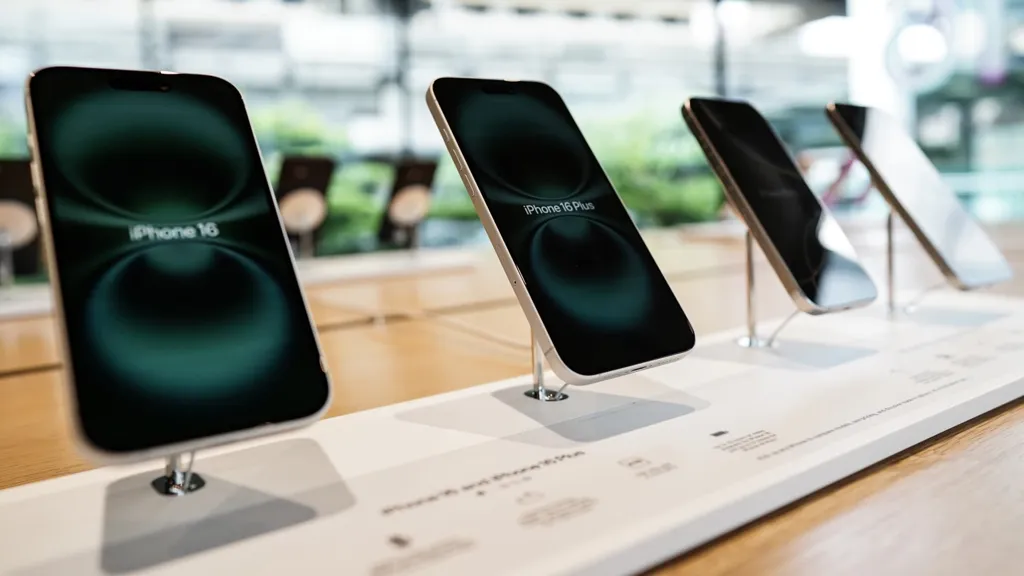Apple is having a strong year, and the stock may be poised to go even higher in 2025, according to JPMorgan. The iPhone maker is beating the S & P 500 in 2024, up nearly 35% compared to the broad-market index's roughly 27% advance. Apple touched a fresh high on Thursday, and it's on track for a fifth straight winning session. In all of December, the stock has ended the day lower just three times.
Its run comes as tech stocks more broadly helped lift the broader market earlier this week, with all three major averages posting back-to-back gains on Monday and Tuesday. Along with Apple, shares of other megacap tech stocks Nvidia and Meta Platforms inched higher in those two sessions.
With the new year just days away, analyst Samik Chatterjee is taking a bullish stance on Apple. "We see upside in several aspects of the business as well as financials that remain underappreciated by investors, namely the transformation of the company to Services, growth in the installed base, technology leadership, and optionality around capital deployment," he wrote in a recent note to clients.
Heading into next year, the analyst - who has an overweight rating on Apple and whose price target of $265 implies more than 2% upside from Tuesday's close - thinks the lift will come with the launch of the iPhone 17. That release, he said, will kickstart a volume upcycle for iPhones, as driven by the rollout of features in the company's artificial intelligence platform, Apple Intelligence.
On that front, Chatterjee projects that iPhone sales will increase from 230 million units in both fiscal years 2024 and 2025 to 251 million units in fiscal 2026. They will reach 263 million units in fiscal 2027. In addition, he anticipates that revenue will see a compound annual growth rate of 9% between fiscal 2024 and fiscal 2027. Over that same period, he estimates that earnings will have a compound annual growth rate of 16%.
But even without AI, Apple may likely still see gains, Chatterjee said. While earnings forecasts may look "materially different," the analyst sees limited downside to volumes within the context of "stabilizing" consumer spending. If tailwinds from AI don't take hold, Chatterjee sees revenue expanding at a pace in the mid-single digits. That growth, he noted, would lead to earnings growth in a range between 8% and 10%, as supported by margin expansion and share buybacks.
"While the volume upcycle is key to bull case with AI, the bull case without AI hinges on healthy revenue and earnings growth led by Services revenue growth and margins with limited further downside on iPhone volumes and an intact premium valuation while investors await datapoints around consumer traction for AI features being rolled out steadily," he added.
Chatterjee thinks Apple can successfully navigate any threats related to President-elect Donald Trump's tariff plans through "modest" pricing. While campaigning, Trump has called for tariffs upward of 60% on China goods. He doubled down on that sentiment last month, vowing an additional 10% duty on Chinese goods and a 25% duty on products from Mexico and China. The analyst joins others on Wall Street who also say the company can mitigate any potential impact by expanding its manufacturing in other countries like India.
"If tariffs specifically targeting manufacturing in China are imposed, we anticipate that Apple will leverage its expanding assembly footprint in India to address U.S. consumer iPhone demand, thereby mitigating the volume-related headwinds from the tariffs," Chatterjee said.
Chatterjee's forecast is among the majority of analysts on Wall Street with a similarly bullish stance. Of the 49 analysts covering Apple, 35 of them have a strong buy or buy rating, according to LSEG data. On the other hand, 12 of them have taken a neutral stance, having a hold rating.
During Thursday's session, Apple shares were up 0.3%, bringing month-to-date gains to more than 9%.
